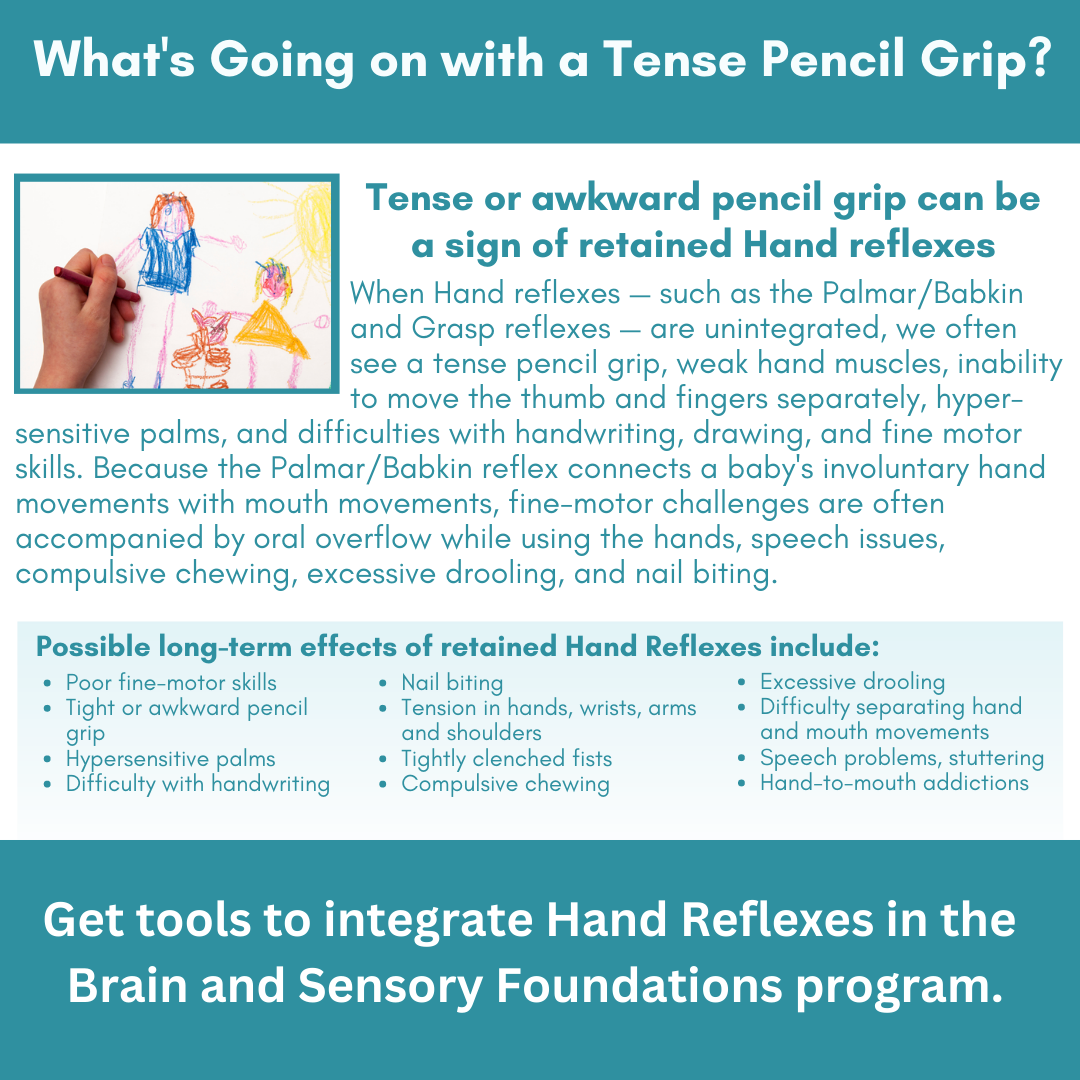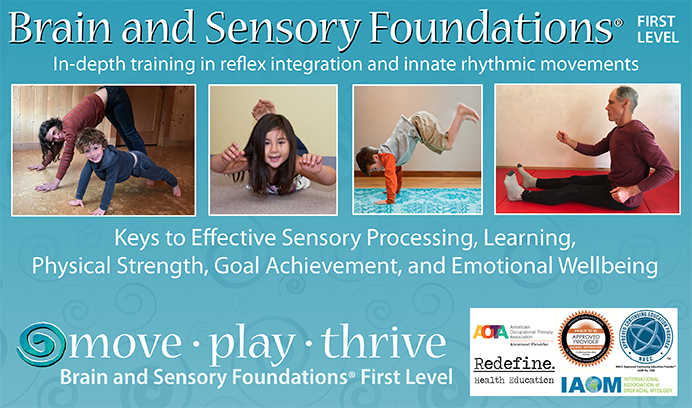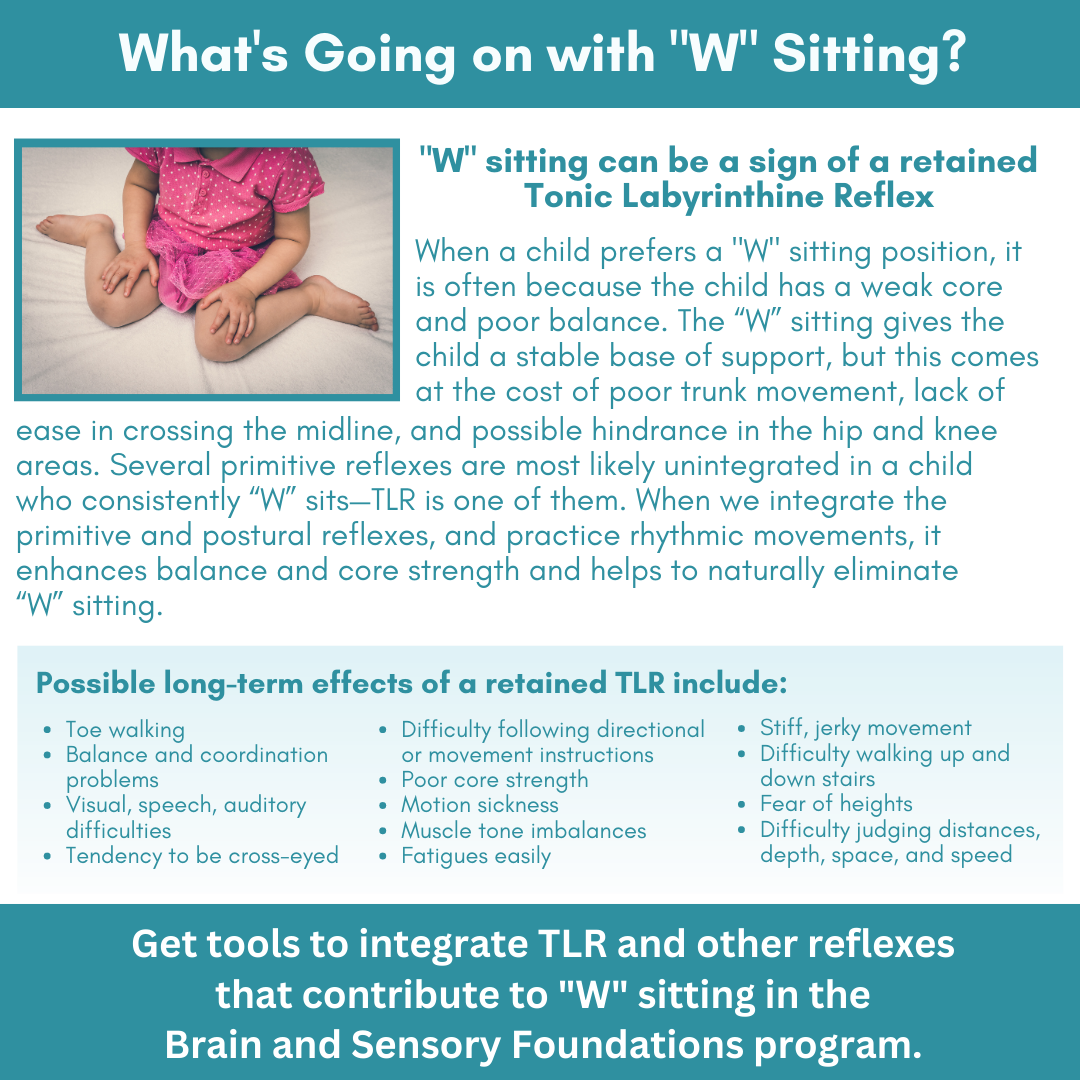How Compensations Can Alert Us to Developmental Issues




For more information about innate movements, subscribe to our free monthly newsletter!
|
|
Greetings,
One of the joys of spending time with children is observing their quirky habits.
Whether it's a funny turn of phrase, or a unique mannerism, children show us
their individuality in countless ways, and it is beautiful to witness. Sometimes
though, what may seem like just a mannerism is actually an indicator of a
developmental challenge.
Have you ever wondered why some children sit with their legs folded backward
in a "W" position? Or, why a tense pencil grip is so common? When viewed
through the lens of development, it becomes clear that these and other
indicators (such as toe-walking, oral-motor fixations, hypersensitivities, fidgeting,
etc.) are the result of the brain and body compensating for incomplete
development and/or retained primitive reflexes.
Because development is progressive, when early skills are not fully developed,
compensations often take hold. For example, a child with a retained Tonic
Labyrinthine Reflex will likely experience poor core strength and balance issues
and may have a tendency to "W" sit.
|
With “W” sitting, the wider base of support does not solve the underlying issues and will not improve the child’s innate ability to balance – that piece of the foundation is missing. Compensations are often developmental issues that can be greatly helped by giving the child neurodevelopmental movements. Using the tools from the Brain and Sensory Foundations program, you can learn to spot compensations like "W" sitting and tense pencil grip (more on this in the info-graphic below). The course shows you how to assess for retained primitive reflexes and then boost development for much better physical, emotional, and cognitive function.

It’s heartbreaking to consider the frustration a child must feel when encountering daily tasks that just never come easily -- especially when those around them are mastering those skills and moving on to more challenging ones. Understanding the roots of these developmental issues can give us the compassion and perseverance required to guide a child through the steps of development. Watching the foundation grow, and skills becoming easy and fluid, makes it all worth it.
Thanks for reading this newsletter! Enjoy these mini info-graphics and please share them widely.
Best wishes,
Sonia
|
|

Be empowered with the Brain and Sensory Foundations course.
Train the Brain for Functional Gain!


